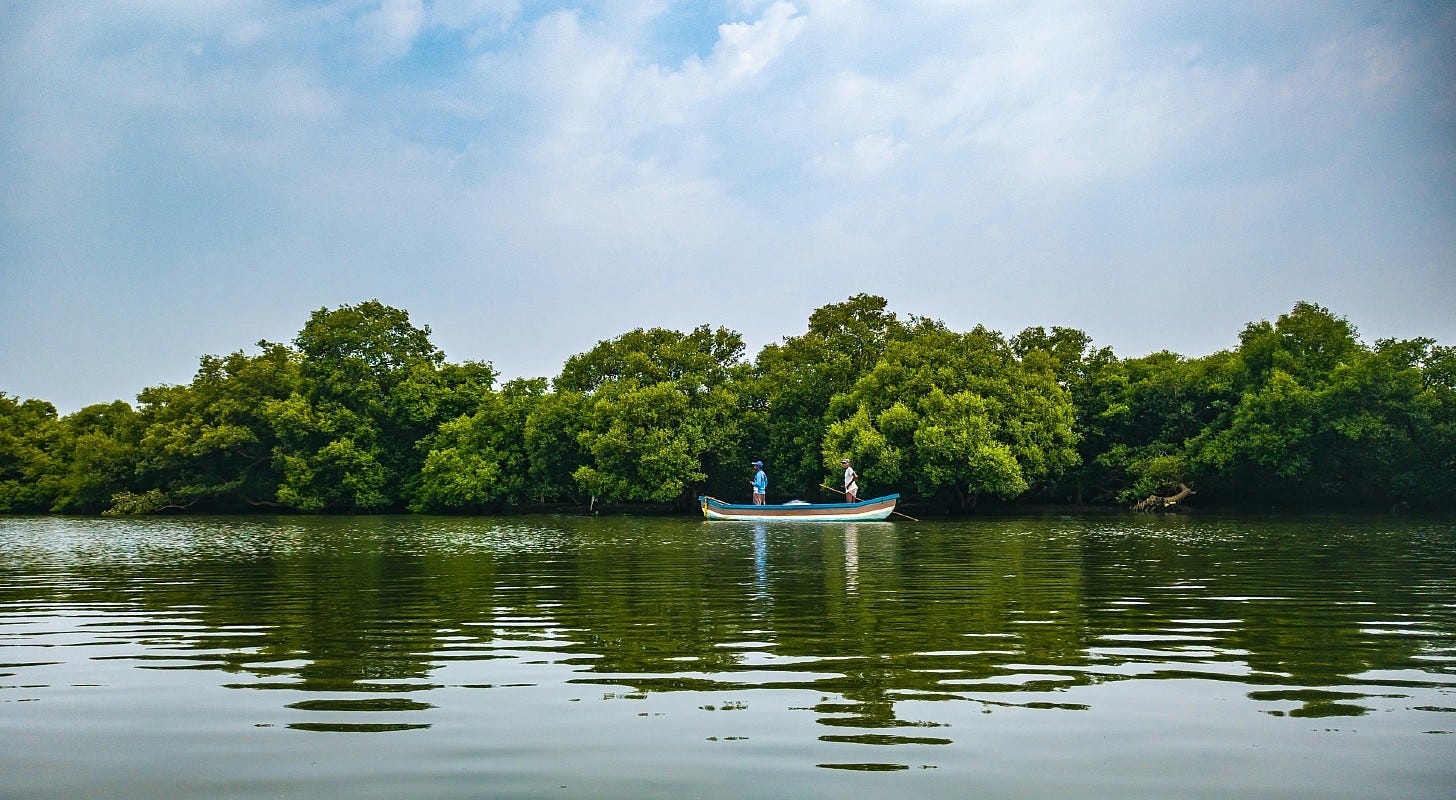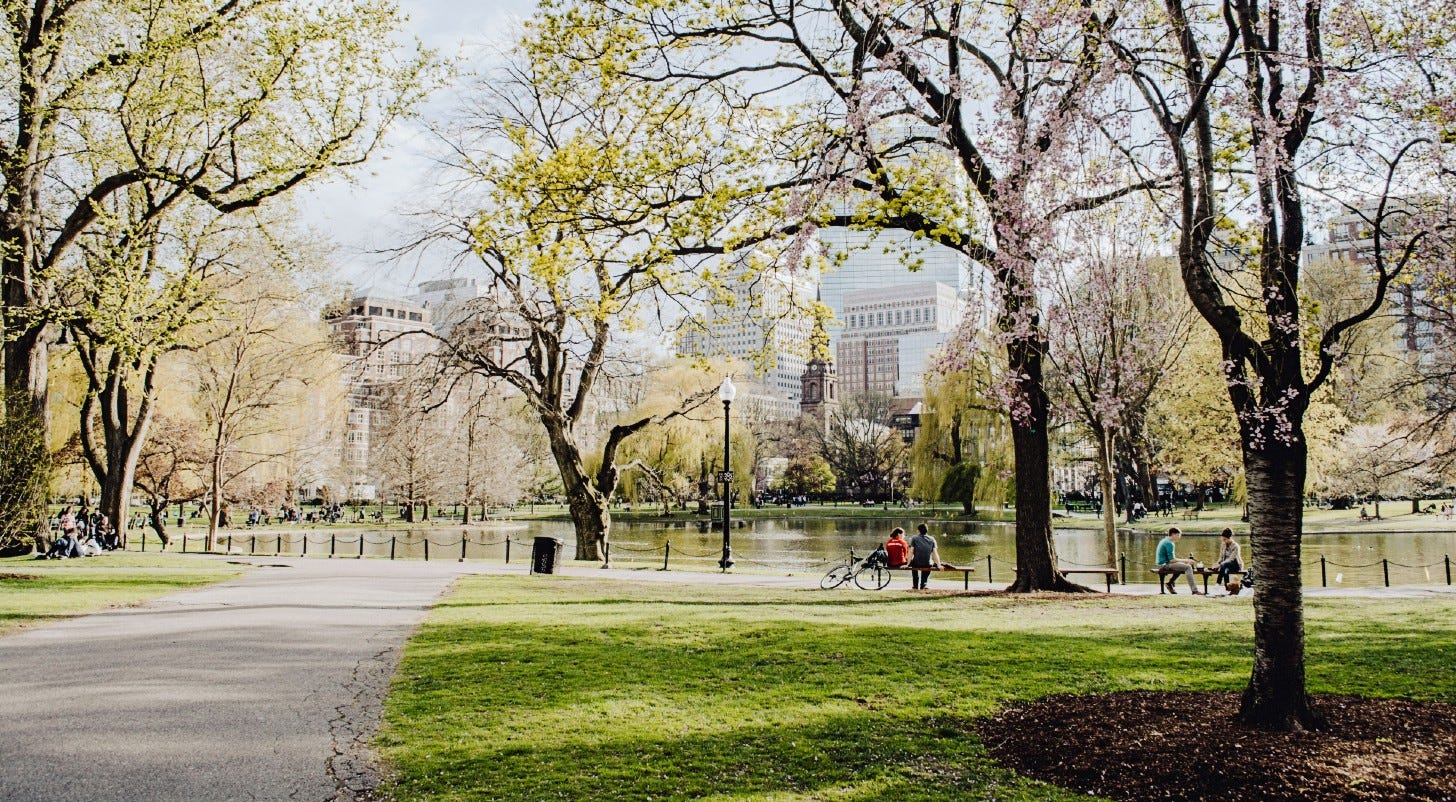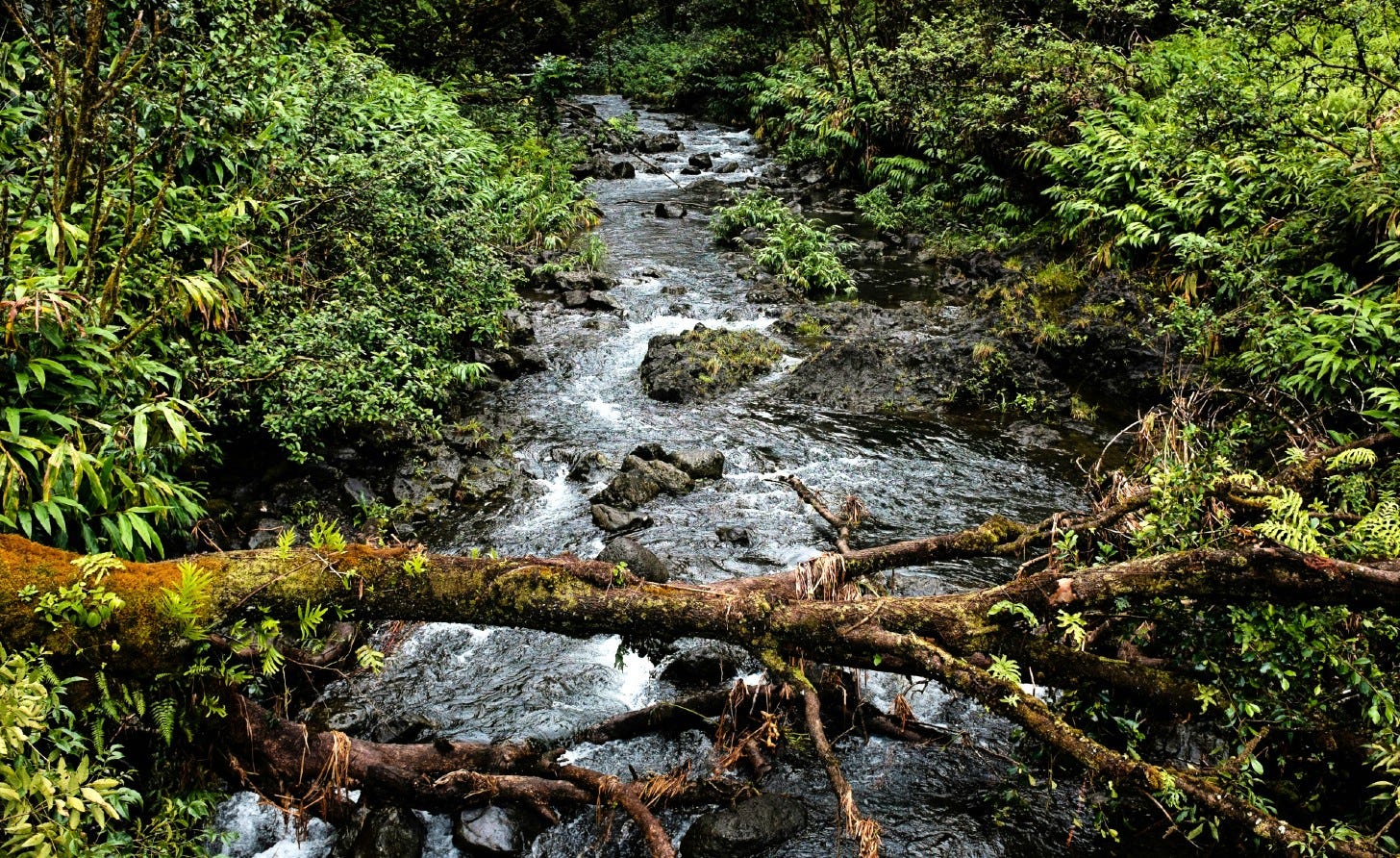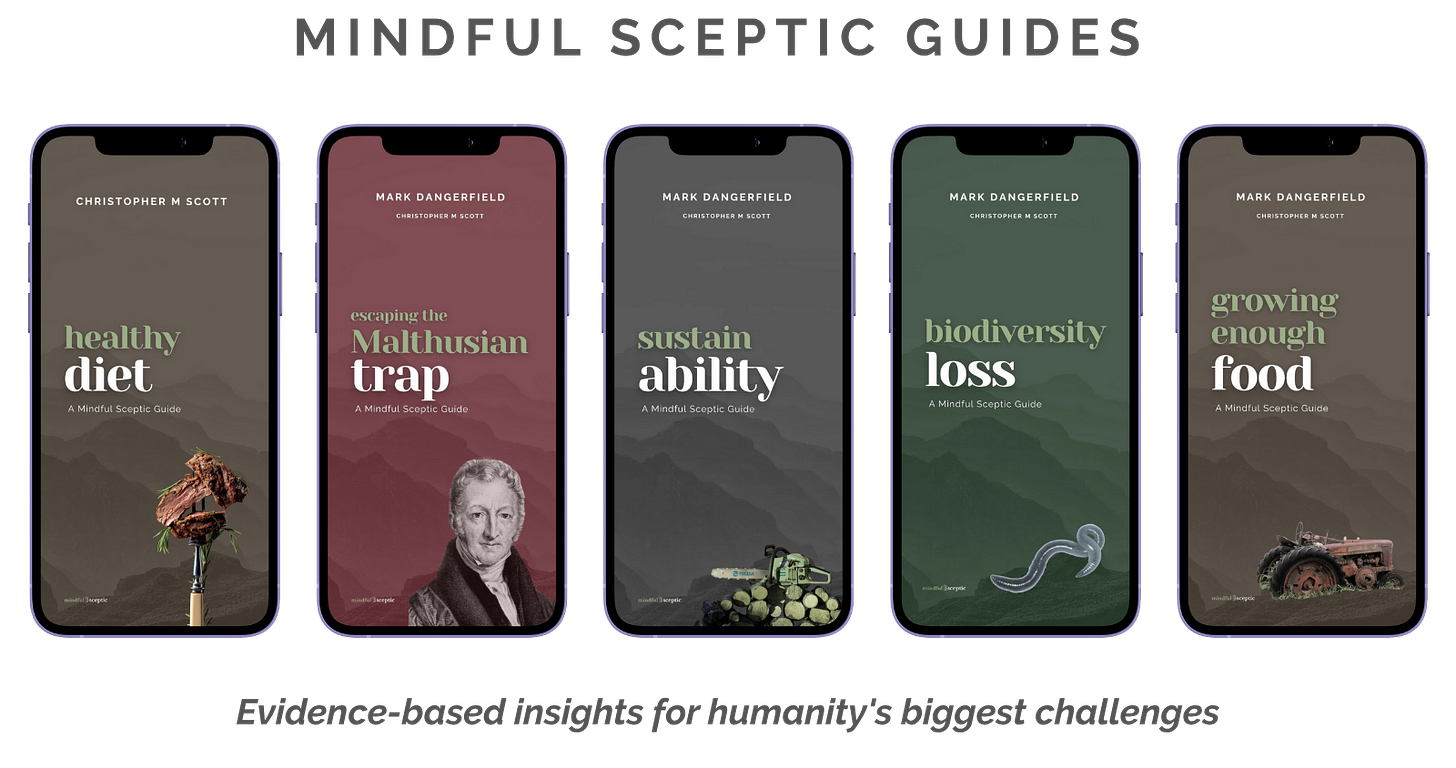The $4 Trillion Global Infrastructure Spending Dilemma
A mindful sceptic confronts the task of building tomorrow
More than $4 trillion of new infrastructure is needed worldwide each year. Pause on that number for a moment, then explore it with us.
Imagine waking up tomorrow to find that nearly half the world's population—toddlers in Tokyo to grandparents in Ghana—has been gifted a brand-new iPhone 16 Pro. The other half? They're not left out—they're receiving an equivalent cash gift of $600 each.
This might sound like a far-fetched bonanza for all except Apple executives, but it represents the staggering $4 trillion needed annually for new global infrastructure spending.
Every year, investment is needed to maintain the status quo and absorb the arrival of more people, equivalent to half an iPhone for every man, woman, and child on the planet. We are talking houses, roads, bridges, schools, hospitals, power plants, and all the necessary paraphernalia to keep modern humans alive and well.
This number is so vast it's hard to comprehend, yet it's the reality we face as our global population surges past 8 billion, growing at a dizzying rate of 8,000 people per hour.
This is about more than just impressive numbers or shiny new buildings. It's about the very fabric of our societies, the foundations of our economies, and the future of our planet. If we don’t build the infrastructure, the demand for housing, education, transport and jobs will outstrip supply.
A mindful sceptic is staggered and freaked out by $4 trillion.
It is a tremendous amount of cash. Only the mindful sceptic knows that cash is a surrogate for energy and resources because that is what it buys. Then, they ask the obvious questions. What are the actual costs and consequences of this massive infrastructure boom? Are we building a sustainable future or constructing a house of cards?
In this Become a Mindful Sceptic issue, we examine this $4 trillion challenge, question some assumptions, and explore the complex web of global infrastructure development. It's time to look beyond the concrete and steel to understand what this unprecedented growth means for our world.
Concrete Consequences of Population Growth
$4,000,000,000,000 is a vast sum.
It represents $500 of investment for every man, woman, and child on the planet and an estimate of the cost of new global infrastructure spending required to meet the expected demand for housing, schools, hospitals, and all modern amenities.
This rate of infrastructure finance is an annual figure. It will need to continue each year, given that, as of 2017, over half of the required urban area by 2030 has yet to be built.
Around 60% of the area expected to be urban by 2030 has yet to be built so the technologies used to realise that infrastructure investment will have far-reaching social and ecological implications.
Kate Raworth, Doughnut Economics
As the built area grows, so do the paved roads, bridges, pipes, cables, and a plethora of infrastructure projects that modern society requires. Such development requires vast mineral resources, occupies space and consumes energy.
Most of the new development will happen in Africa and parts of Asia with the highest population growth. These infrastructure needs and the private sector and public finance to meet them are a consequence of 8 billion people increasing at 8,000 an hour, or if you prefer, 70 million a year.
All this is too vast to comprehend.
Achieving such development assumes a robust economy and prosperity or debt to pay for it. But even if the spending declines or some needs are unmet, by 2050, the world will have more built area than it does today.
I have been around long enough, one of the last boomers born in 1961, to know precisely what this means.
Let’s start in East Africa.
Global infrastructure trends in Africa
I remember a visit I made to Uganda in the late 1980s. Maribou storks roosted on the tall buildings in the capital, Kampala, and the potholes in the city's roads swallowed vehicles whole, but the people smiled wide and warmly welcomed the white scientist.
After a bumpy flight from Nairobi, I arrived in a rickety Kenya Airways 707 that trundled me into Entebbe airport. It was parked next to a gleaming British Airways 747, an alien creature that dwarfed everything, including the terminal, a tiny concrete building.
Wide-bodied jets are common today, and the terminal buildings sprawl across the landscape. The airport is still small by international standards but has grown over the years as part of global infrastructure spending.
Imagine telling that story to the region's villagers 130 years ago after they encountered John Hanning Speke and Richard Francis Burton in 1856 on their East Africa expedition to find the Great Lakes. Metal birds, concrete paths, and buildings made of stone as alien as the pale-skinned men with weird gourds on their heads.
Colonialism, religion, and racist ideology were not the only things white men brought to Africa. They also carried the knowledge of infrastructure development with them. In Africa, much of the 60% urban expansion Raworth quotes will be needed.
Blink, and you will miss it, is the message.
Infrastructure is going up everywhere at dramatic rates. Even in developed countries, some changes might not be noticeable but go away for a while, and even established cities look a bit different when you return.
It even happens in the smaller countries.
Infrastructure trends are fast
Botswana had just over 2.36 million people in 2020. This relatively small population means it has few of the population problems that trouble most African nations. But when I went to work there in 1989, just 30 years ago, there were 1.24 million people.
The Batswana are big on education. The teacher is as revered as the village elders, and the government has invested in education, including new schools. Around 27% of the population are school-age children, so in the 30 years since my time there, Botswana has needed an additional 300,000 school places. Assuming each school has 1,000 students, this means 300 new schools to keep all the children in the classroom.
Again, this is the blink.
Now, what about a more populous country with similar population growth rates?
Nigeria's population was 92.79 million in 1989 and 206.1 million in 2020. Assuming similar proportions of school-age children, the Nigerian government had to build infrastructure for an additional 79 million students or 79,000 schools.
Each school would need roughly 60 teachers and, if built on the Western model would cost upwards of $6 million a year to run. Nigeria has to find an extra $474 billion to deliver top-class education to the newly arrived children.
It was a blink but also a monumental challenge.
What type of infrastructure investment?
The volume of change in the built infrastructure is daunting. However, there is nothing like the demand for places to live and work. It screams opportunity, with developers and entrepreneurs lining up to do all the heavy lifting. And they are always in a hurry, given that time is money.
In her fascinating Doughnut Economics, Kate Raworth makes the key point that how this infrastructure is built has a huge impact on the environmental costs and the well-being of the people who inherit the buildings and roads.
What is needed is a virtual pause to consider questions like this one.
Schools are needed, but what type, where and with what materials?
Answers that consider the context, materials, and risks will make a difference to future resilience and prosperity. For example, the International Institute for Sustainable Development (IISD) found that using natural infrastructure to protect against climate breakdown could save up to $248bn (£180bn) a year globally, costing only about half as much as equivalent built infrastructure and delivering the same protection.
Natural infrastructure refers to ecosystems, such as forests, wetlands, and reefs, that provide essential services like flood protection, water purification, and biodiversity support, offering cost-effective and sustainable solutions for environmental challenges.
These natural systems act as green infrastructure, safeguarding communities from natural disasters like floods and storms by absorbing and slowing down water, reducing erosion, and mitigating the impact of climate change. They also contribute to clean water supplies by filtering pollutants, improving water quality, and regulating water flow. Additionally, natural infrastructure supports diverse habitats, preserves biodiversity, and offers economic benefits through tourism and recreational opportunities.
When planned and managed as networks of natural lands, working landscapes, and other open spaces that conserve ecosystem values and functions, these systems provide essential services like flood protection, water purification, and climate regulation, often more cost-effectively and sustainably than traditional built infrastructure.



Investment in infrastructure that uses and maintains these natural systems benefits the environment and provides cost-effective solutions for various societal needs. It could even be a new infrastructure sector.
How it can be done
Innovative thinkers and planners are turning to sustainable solutions that work with nature rather than against it.
One groundbreaking concept gaining traction is the idea of "sponge cities," pioneered in China but now spreading globally. These urban designs incorporate permeable surfaces, rain gardens, and green roofs to absorb and filter stormwater, reducing flood risks and water pollution. Wuhan, a city of 11 million people, has transformed 39% of its area into sponge zones, demonstrating how large-scale implementation can revolutionise urban water management.
In the transportation sector, the revival of streetcars and light rail systems in cities like Portland, Oregon, shows how we can reduce reliance on car-centric infrastructure while improving urban mobility. These systems decrease traffic congestion and carbon emissions and catalyse transit-oriented development, creating vibrant, walkable neighbourhoods.
Biophilic design is another innovative approach that is making waves in infrastructure development. With its lush indoor gardens and waterfalls, Singapore's Changi Airport exemplifies how integrating nature into built environments can enhance user experience while providing ecosystem services like air purification and noise reduction. This approach is now being adopted in office buildings, schools, and hospitals worldwide, recognising that connection to nature is not a luxury but a necessity for human well-being.
In the energy sector, virtual power plants (VPPs) are reimagining how we generate and distribute electricity. By networking small-scale electricity producers—from rooftop solar panels to electric vehicle batteries—VPPs create a decentralised, resilient power grid. South Australia's virtual power plant, which aims to connect 50,000 homes, showcases how this technology can reduce reliance on large, centralised power stations and foster community energy independence.
Innovative funding models are also emerging to support sustainable infrastructure. Like those the European Investment Bank issued, green bonds are channelling billions into renewable energy projects and sustainable transportation systems. Meanwhile, public-private partnerships enable ambitious projects like New York's High Line, transforming abandoned infrastructure into cherished public spaces that boost local economies and community well-being.
The $4 trillion question isn't just about how much we build but how wisely and sustainably we build it. We don’t have to spend the money on concrete.
This all sounds rather lovely and even quaint. All we have to do is incorporate nature, and the global infrastructure spending dilemma will be resolved.
What does a mindful sceptic think about all this?
Unpacking the $4 trillion dilemma through a mindful lens
Applying mindful scepticism requires a blend of critical thinking, open-mindedness, and awareness of our biases.
A good start is the premise.
Is $4 trillion annually a realistic or necessary figure? We should examine the sources of this estimate, the assumptions behind it, and potential biases in its calculation. Are there vested interests promoting this figure? What methodologies were used to arrive at this number?
8,000 an hour is real. These people—roughly 70,000,000 additional humans every year—have to eat, have a place to live, be educated, and, soon enough, earn a living. We will need 15 million new homes per year, and if we are generous and follow the Global Cities Institute estimate that the average cost to build a home globally is around $60,000, then we are looking at $900 billion, a fifth of the bill just to build the houses.
Nigerian politicians and civil servants can tell you how much it costs to educate all these extra children—even chalk and talk will require buildings covering approximately 50,000 square feet. At US prices that would be roughly $15 million per school and we are going to need 70,000 of them per year—another trillion dollars.
Looks like $4 trillion is in the ballpark.
A mindful sceptic also considers alternative perspectives. Could our infrastructure needs be met differently, perhaps with less spending but smarter allocation? Are there innovative solutions that could reduce costs while improving outcomes? We might explore ideas like retrofitting existing structures or investing in natural infrastructure, which might take care of another 25% of the bill.
It's crucial to look beyond immediate needs and consider long-term impacts. How will this massive infrastructure investment affect future generations? Are we considering environmental impacts, resource depletion, and long-term maintenance costs? We should question whether short-term gains might lead to long-term problems.
Then mindfulness kicks in some more.
Are we assuming that more infrastructure always equals better quality of life? How might different cultures or communities view their infrastructure needs? A mindful sceptic would question who benefits from this infrastructure spending. Are we perpetuating or addressing inequalities? How can we ensure infrastructure development serves all communities, not just the affluent?
These are pertinent questions, but homes, schools, and infrastructure that help maintain the social contract are also needed in the favelas, not least because this is where many people go to live.
According to UN-Habitat data, approximately 1 billion people, or about one in eight people, live in slums and informal settlements globally. This number is increasing by roughly 10%, or 100 million people a year.
Become a mindful sceptic on $4 trillion of global infrastructure
Humans are insatiable. We cannot help ourselves in betterment. Getting and being more is hardwired into our psyche because back in the day, if we slacked off, we perished.
We can survive with less and even find true happiness doing it, but the basic needs must still be met. And we currently do this with existing and new infrastructure. Indeed, we could not meet the basic needs of 8 billion people without it.
There is no doubt that 8,000 more people an hour, or if you prefer, roughly 70 million a year, means building infrastructure that will cost trillions in investment and use resources. This is the extra need on top of the maintenance and betterment required by the 8 billion people already here. Generating infrastructure assets at this scale is hard to grasp or forecast.
It makes you shake like you are in an ancient Boeing 707.
Key Points
Infrastructure needs for 70 million new humans annually aren't just about finding $4 trillion—they're about fundamentally rethinking how we build. The real challenge is shifting our mindset, not just our budgets.
Natural infrastructure solutions like mangroves, wetlands and protected watersheds often outperform traditional concrete-and-steel approaches, delivering multiple benefits at a fraction of the cost. We're ignoring nature's free services while paying premium prices for inferior solutions.
The conventional wisdom that more concrete equals more progress has become a dangerous myth. Our ancestors often worked with natural systems rather than against them, and modern examples like NYC's watershed protection program prove this approach still works at scale.
True progress means questioning our assumptions about infrastructure. The mindful sceptic asks not just how much to build, but whether we need to build at all. Sometimes the best solution is to protect and enhance what nature already provides.
You Might Also Like
Mindful Momentum
What innovative approaches have you seen in your community that could be scaled globally?
In the next issue
Ever wonder why environmental problems seem simultaneously obvious and invisible?
Next week, I'll take you inside the fascinating world of environmental perception. From the streets of Hong Kong to the latest cognitive science, we'll explore how our minds process planetary change and what we can do when our ancient brains meet modern challenges.
Creating content that bridges academic rigour with practical insight isn't quick work, even with a chatbot or two for company.
It requires extensive research, careful analysis, and more coffee than is probably healthy.
If this evidence-based approach to environmental thinking has proven valuable in your professional or personal context, your support helps sustain this work… And keep the newsletter free.









